Oh hello there. You’ve found some very old content. Please read the disclaimer on this page before thinking I’m still a total sheep who has been sucked into a bone-broth worshipping fad diet. Been there, learned from that and am now a much less rigid human.
In this post I talked about why for me and where my health is up to, I’ve decided to undertake a ketogenic diet. The response from you guys, wanting to know more, telling me your families are also eating this way for a short period of time, has prompted me to collate my go-to ketogenic meals, to demonstrate that Ketosis isn’t all doom, gloom and sweet butternut pumpkin deprivation.
With an open mind, ketosis needn’t be a psychological burden. If I, a girl whose favourite foods include pumpkin, sweet potato and buckwheat, can survive the low-carb life long enough to rid herself of candida, there’s hope for almost anyone, right?
For Breakfast
Poached or hard boiled eggs with avocado and sauerkraut or your favourite type of fermented vegetables. Ready in 7 minutes.
Chicken or Lamb Broth – to sip on through the morning. I love this on mornings when I can’t quite stomach a full meal, I always add a generous pinch of fine sea or Himalayan salt for extra minerals and for taste. Adding some cauliflower, onion and garlic and cooking until soft and blending up for a warming drink is a little more substantial, but still light enough to give your digestive system a mini-break
1/2 large avocado with a big blob (or two) homemade nut butter (just nuts and coconut oil blended to form a paste) – full of protein and fats to fill me up
Cauliflower Mash with sauerkraut and a small amount of slow cooked meat – super easy if there’s leftovers from the night before
Homemade yoghurt topped with cacao nibs, activated walnuts and pepitas (can use other nuts and seeds of choice of course … roasted sunflower seeds and cashews with cinnamon and vanilla is a divine choice too)
For Lunch
Mince simmered in broth with cabbage, brussel sprouts, broccoli, onion and garlic (I also added in chilli, black pepper, turmeric, vanilla bean powder and cinnamon to the batch in the pic below), topped with sauerkraut and cashew cream (in the picture below I’ve used a fermented beetroot and ginger cashew cream) – this meal is so tasty and easy. Make a big batch and freeze some for future lunches.
My friend Jo’s Butter Chicken (but omit tomato puree – no need to replace it with anything, the recipe works fine without it) with steamed greens and cauliflower rice.
Cauliflower soup and some slow cooked meat – this is great to make a big batch of (the soup) and have containers of slow cooked meat on hand for heating up in some broth (I’ll often add some veggies in with the meat to cook such as broccoli or zoodles).
Avocado with sauerkraut – I mash the two together to make a salad, this is great when you’re appetite is less than usual but you still want to have something light and nutritious. If you’re up to it, maybe add some leftover roast meat (in the picture below I’ve got some leftover Turkey)
*Always try to have a cup of broth (seasoned with some quality salt) with meals to aid digestion and provide hydration and minerals or alternatively, try a few Tablespoons of apple cider vinegar and lemon juice in filtered water 10 minutes before a meal to stimulate digestive enzymes
For Dinner
Meat patties cooked in broth (just plain mince with salt and pepper, maybe some minced garlic and diced onion for extra flavour) with cauliflower mash and steamed greens (add a spoonful of fermented veggies too for some probiotic nutrition)
A salad of rocket or baby spinach, avocado chunks and fermented veggies (or steamed broccoli with olive oil, sea salt and chopped herbs) for “starters” and a GAPS, keto or ultra-keto muffin for dessert (this option is one other quickest and easiest options and never gets old – well not for me anyways!)
Lightly cooked salmon (I boil filtered water and pour it over the salmon fillet in a glass bowl. Leave the fish to sit in the water for 2-3 minutes and then remove, slice into chunks and arrange over a big bowl of veggies. The fish should be lightly cooked and still a little raw in the middle – just the way this chicken likes it) with spiced broccoli rice (use this recipe and sub the cauliflower for broccoli) or alternatively just a combo of broccoli and cauliflower cooked in broth (serve the broth in a mug on the side) plus some zucchini roasted in coconut oil for extra goodness and flavour
A mince, vegetable and avocado mash up with any herbs and spices you like – I believe the picture below had beef mince with celery, cabbage, kale, chili, ginger, garlic, salt and smoked paprika with avocado mixed in … it was the best!
Zoodles with broth poured over the top of them in a bowl, with sauerkraut added at the end, with slow cooked meat and bone marrow – so full of good fats, whilst the raw zucchini and salty cabbage keep it fresh and cuts through the richness
Lamb Shanks, cooked in water to make a broth with ghee, onion, garlic, cabbage, broccoli, zucchini, kale, spinach, silverbeet (whatever greens you have on hand really). I’ll serve this with my friend Jo’s cauliflower and leek mash (just to change things up from my recipe – if you find it hard to stay in ketosis when using coconut cream, then just substitute it for broth and maybe a little more animal fat). I like to enjoy a rich cup of the creamy leftover lamb broth with some salt (it’s so good because of the ghee – thanks for that tip Jo, you are the broth goddess and your lamb broth is the best I’ve ever had … liquid gold!!!!) as a soothing drink before bed.
Steamed broccoli with mashed avocado, your favourite herbs (fresh or dried) and herb salt (such as herbamare) + extra avocado cubes with nut butter once you’ve finished your broccoli couse (a dessert of sorts) this one is a bit quirky, but is a great way to use up avocadoes that are too ripe and on days when you feel a bit ‘meated out’).
Roast meat (chicken, lamb leg or rack, duck, beef, turkey etc.) with cauliflower mash (either mine or Jo’s, see both recipes above) with salad greens and fermented veggies.
Snacks
Nuts – preferably activated (but in saying that I just ate several handfuls of non-activated macadamias … which tend to be the most forgiving nut in terms of not activating them). These are high in fat and protein and will keep you full in between meals.
Alternatively try a few spoonfulls of nut butter stirred through coconut oil with some sea salt, cinnamon and vanilla … maybe even some sneaky raw cacao for a chocolate hit – yum!!! Mix together in a little dish and set in freezer for 1/2 hour – instant fudge.
Take your nut-butter-gasm to the next level by indulging in a few spoonfuls of this recipe, straight from the jar
A cup or two of broth with sea salt – like a cup of tea, but not, I love adding cauliflower, cooking until soft and whizzing up in the vitamix. The white colour and creaminess reminds me of warm milk … but better and more gut-healing!
Leftover cauliflower mash (either mine or Jo’s) with some Sauerkraut stirred through
Steamed broccoli florets with ghee or olive oil, salt and pepper – weird snack I know but seriously good! Add some chilli flakes for an extra kick
Celery logs stuffed with nut or seed butters – classic right!
Hope that this goes to prove just how versatile and yummy a ketogenic version of GAPS is and that you don’t need to miss out on everything – I mean you can eat butter chicken, creamy mash, and hamburger patties, that aint too shabby! Good luck if this is what you decide to do, I hope it works and starves those nasty parasites and/or candida so quickly they literally don’t know what hit them (then you can introduce some more carbs again – and you’ll appreciate them so much more).
Yours in ketogenic meal planning,
Rachie xxx
*As always this post is NOT encouraging you to make major changes to your diet – please do your own research on this and work with a qualified practitioner if you need to. This is a post for those that are already committed to a ketogenic modification of the traditional GAPS protocol for various health reasons, and just need some foodspiration to stay sane.
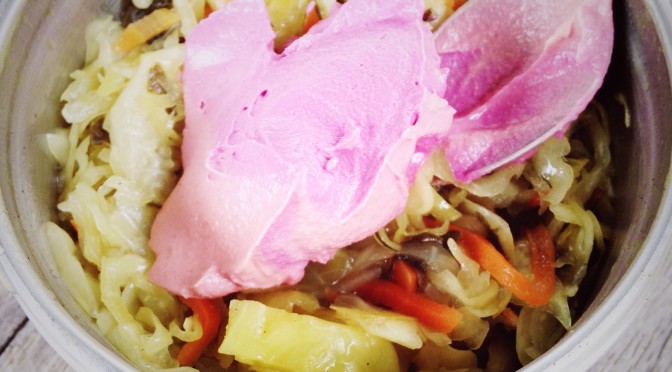
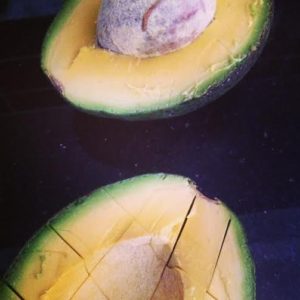
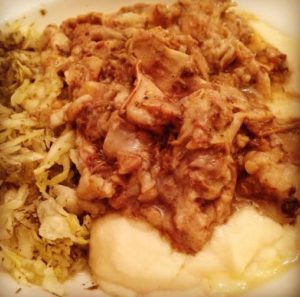
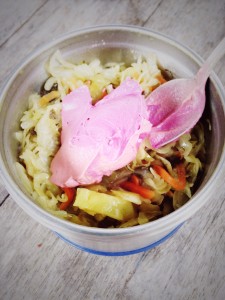
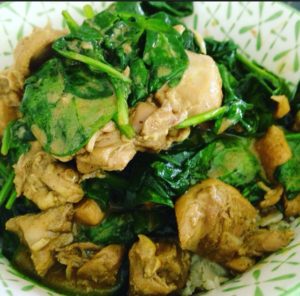


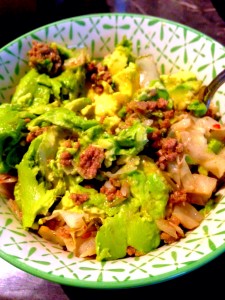
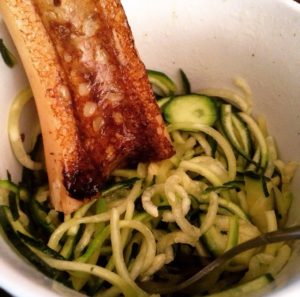
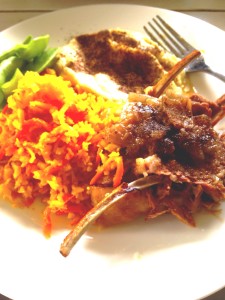
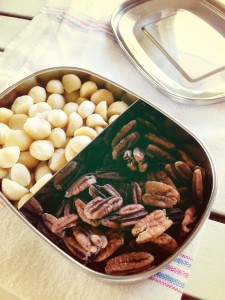
So great that someone has put this together as I follow GAPS strictly but prefer to stay in ketosis too. I’m insulin resistant and my carb tolerance is so low that when I get things wrong I’m on that roller-coaster of hyper/hypoglycemic therefore I can’t do the juices, pumpkin pancakes or eat any fruit ( besides small amount of berries, tomato and avocado).
Well done I think this is the way forward for anyone with impaired carbohydrate metabolism that is interested in gut healing.
Thanks for the positive feedback – I think ketogenic GAPS certainly has it’s place for some of us. Glad its helping you 🙂
Hi Rachel, ketogenic GAPS is very interesting to me due to insulin resistance. I was wondering, what level of ketones do you aim for? And do you measure the amount of meat, fish and eggs you eat while doing ketogenic GAPS as these turn to glucose and can keep you out of ketosis, so I read. If so, how do you figure out how much meat and eggs is the right amount for you? Thanks, Sarah.
Hi Sarah,
I just aim for the middle purple colour on the ketodiastix, but so long as I have some ketones, I am happy. Sometimes it’s even darker and I’m okay with that too. I don’t count carbs or grams of proteins and find that if i just focus on getting a wide variety of non-starchy veggies, meats and quality fats that I stay in ketosis. It’s not healthy to get too hung up on gram for gram readings unless your body really struggles to stay in ketosis. If you need specific guidance on this, please seek out an open-minded practitioner with experience in implementing ketosis in a safe and educated manner.
warm regards,
Rachel
Do you know of any GAPS Practitioners in the greater Brisbane area who does Ketogenic GAPS? I actually had implemented a version of Ketogenic GAPS even before reading your blog about it, as I wanted to reduce all carbs and sugars due to insulin resistance (and very bad hypoglycemia) and work at fat adaption. I had hoped I would naturally achieve ketosis at some point. However, I have found that I never seem to achieve ketosis when I test using the keto urine stix. While GAPS is managing the hypoglycemia and insulin resistance, it is not reversing. So I am either doing something wrong, or my body is a hard case. So I certainly do need help. Just wondering who and where. Thanks.
Hi Sarah,
I’m not sure that “ketogenic GAPS” is actually a thing (in terms of GAPS training) – its just a way to describe a GAPS-style lifestyle that eliminates the GAPS-legal starches and sugars. If you go to Dr Natasha’s website gaps.me she has a list of all her trained practitioners and their locations. Also sometimes the urine sticks are unreliable, you may be in ketosis but its just not showing up in your pee (they’re accurate for the first few weeks of ketosis and then your body changes which type of ketones they produce and the ones that show up in urine generally don’t show up anymore … according to Jimmy Moore … guru when it comes to all things ketosis … you might be interested in his podcast show livin-la-vida-low-carb). Blood ketone monitors are far more reliable, its just that they are expensive and as ketosis is only a short term thing for me I didn’t want to invest in one. If you’re insulin resistant and want to try ketosis as a long-term health management strategy then a blood ketone monitor may be the way to go. Best of luck and hope this helps you xxx
Hi Rachel
My Miss 10 and I just found out that we are insulin resistant. We have been following gaps for a year or so and will find it very hard to give up the honey for Keto. I am now looking at Stevia perhaps? Any clues on sweeteners that are Keto and Gaps? Is it ok on Keto to still have carrots and pumpkin but just in small amounts?
Thanks in advance
Hi Jayne,
organic green leaf stevia is your best bet (the powdered green leaf, not so much the processed white powder or pale liquids) and is great in smoothies (there is a slight aftertaste, but your tastebuds do adapt overtime).
Monk fruit sweetener is also another option – in small amounts.
Just because you’re insulin resistant, it doesn’t necessarily mean you need to do a strict ketogenic diet, you may benefit just from relying on sweet veggies such as pumpkin and carrot for sweetness and keeping fruit and honey to a minimum (but a 1/2 cup blueberries here or 1 teaspoon of raw organic honey there is unlikely to be a huge deal).
Have you considered working with a holistic nutritionist or naturopath to help reverse the insulin resistance. There’s less strict, more manageable (and enjoyable) approaches than nutritional ketosis.
Of course, these are all just suggestions as I don’t know your full history and would feel rather fraudulent giving ‘definitive’ advice via this medium.
If you do choose to go the kept path, I’d recommend being smarter about it than 19-year-old Rach – Lol. I’d say embrace small amounts of carrot and pumpkin if you love them – they’re so nurturing and contain beautiful fibres that help reverse insulin resistance anyway.
Adding cinnamon to all sweeter recipes helps to balance blood glucose also.
As a generalised rule, insulin resistance responds really well to high-fibre diets (roughly 30g/day – though everyone is different),inclusive of monounsaturated fats (think olive oil, macadamias and avocados) and moderate in protein (not going overboard – excess protein converts to glucose).
If you hav further questions, I’m happy to do a phone chat (see the ‘how can I help you?’ tab).
warmest regards and congratulations on being a proactive, food-centred individual – your daughter is lucky to have a mum like you looking to medicinal food xxx